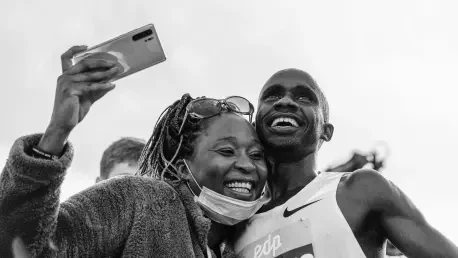I’m thrilled to sit down with Vladislav Zaimov, a seasoned telecommunications specialist with a deep background in enterprise telecommunications and risk management of vulnerable networks. With years of experience under his belt, Vladislav has a unique perspective on how cutting-edge technology is transforming major sporting events like the Ryder Cup. In this conversation, we’ll dive into the evolving role of network infrastructure at high-profile tournaments, the integration of artificial intelligence in event management, and the challenges of deploying massive connectivity solutions across sprawling venues. We’ll also explore what the future holds for automation and data security in this space.
How did your journey in telecommunications lead to working on events as massive as the Ryder Cup?
My career in telecommunications started with a focus on enterprise solutions, ensuring secure and reliable connectivity for large organizations. Over time, I became fascinated by the unique challenges of temporary, high-stakes environments like major sporting events. The Ryder Cup, with its enormous scale and diverse technical demands, became a perfect testing ground for innovative network solutions. I got involved through partnerships with tech providers who were looking to push the boundaries of what’s possible in event connectivity, and it’s been an incredible ride to see how technology can elevate these experiences for organizers, players, and fans alike.
What’s the story behind getting tapped to provide network solutions for a prestigious event like the Ryder Cup?
It all started with a series of conversations with event organizers who were looking for a provider that could handle the complexity of a tournament spread across vast areas with hundreds of thousands of attendees. They needed a partner with proven expertise in delivering robust infrastructure under challenging conditions. My team and I had already worked on similar high-profile projects in Europe, tackling everything from environmental obstacles to strict timelines. That track record gave us credibility, and after demonstrating our capabilities, we were brought on board to ensure seamless connectivity for the US event.
Can you paint a picture of the sheer scale of the network infrastructure required for a golf tournament of this magnitude?
Absolutely. Picture a sprawling 1,500-acre golf course, hosting around 250,000 people over just a few days. To keep everyone connected, we deployed over 650 Wi-Fi access points using the latest Wi-Fi 6E technology, along with 170 high-performance switches. This setup ensures coverage across every corner of the venue, from the fairways to the fan zones. The challenge isn’t just the size—it’s also about maintaining performance under intense demand, like when crowds gather around a popular player. It’s a logistical puzzle that requires meticulous planning and real-time adjustments.
What are some of the unique challenges you’ve faced while setting up networks in such dynamic outdoor environments?
Outdoor venues like golf courses come with a host of unpredictable factors. In past events, we’ve dealt with everything from wildlife interfering with equipment to navigating historical or environmental restrictions that limit where we can lay cables. For the recent US event, we had to get creative, running cables along pathways and even suspending them from trees in protective tubing to avoid disrupting the landscape. Weather can also throw curveballs, and we have to ensure the network stays up no matter the conditions. It’s a balancing act between technical precision and respecting the natural setting.
How has the integration of artificial intelligence changed the game for managing networks at events like this?
AI has been a game-changer. We now use custom-built sensors placed at human height to run constant tests on the network—checking internet access, social media connectivity, and latency issues. These sensors give us early warnings about potential bottlenecks, especially as crowds move around the course creating “hot spots” of activity. Beyond that, AI helps analyze data in real time, allowing us to redirect network capacity where it’s needed most. It’s like having an extra set of eyes that never sleep, ensuring a smoother experience for everyone involved.
In what ways is AI being used to enhance crowd management and operational efficiency during the tournament?
We’ve deployed dozens of AI-enabled cameras to monitor crowd flow, manage lines, and even track inventory at merchandise stores. These cameras collect data on things like crowd density and movement patterns, which feeds into a central platform. Staff can then make real-time decisions—whether it’s redirecting fans to less crowded areas or restocking popular items before they run out. This kind of operational intelligence helps keep the event running smoothly, reducing wait times and improving the overall fan experience.
Looking ahead, how do you envision AI evolving to further transform events like the Ryder Cup in the coming years?
I see AI moving toward greater automation, particularly through what we call agentic AI—software that can independently handle specific tasks. Imagine a network that self-adjusts to bandwidth demands without any human input, dynamically responding to crowd movements or unexpected spikes in usage. By the time we get to future events, like the 2027 tournament in Ireland, I expect certain aspects of network management to be almost fully automated. This will free up human resources for more strategic roles and make events even more efficient.
Why is having an on-site network operations center and private cloud so critical for leveraging AI at these events?
Keeping everything on-site is crucial for two main reasons: speed and security. Processing data locally in a private cloud cuts down on latency, which is vital for real-time applications like crowd management or network optimization. If we relied on a remote cloud, even a slight delay could disrupt operations. Additionally, an on-site setup lets us maintain tight control over sensitive data. We can ensure it stays secure and isn’t exposed to external risks, which is a big concern for organizers and a key selling point for our approach.
What’s your forecast for the role of AI and connectivity in shaping the future of large-scale sporting events?
I believe we’re just scratching the surface of what AI and advanced connectivity can do for sporting events. In the next decade, I expect to see fully integrated systems where AI not only manages networks and crowds but also personalizes the fan experience—think tailored notifications about player movements or real-time concessions ordering based on your location. Connectivity will become even more seamless, with technologies like private 5G playing a bigger role. Ultimately, the goal is to make events more engaging and enjoyable for fans while streamlining operations behind the scenes. It’s an exciting time to be in this field, and I can’t wait to see where it takes us.









